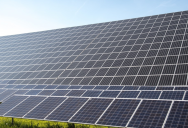Supercapacitors Technology May Allow Phone Batteries To Charge In Seconds And Electric Vehicles To Charge In Minutes

Energy storage has come a long way over the last few generations, but it is still a major bottleneck for some of the technologies that have the potential to push the world forward.
For example, while electric vehicles are quickly becoming very popular, the fact that they have to have massive batteries that can take an extended time to charge is still an inconvenience.
An even more important example is with renewable energy from wind and solar. Solar energy has the potential to provide an almost limitless supply of electricity to the whole world.
The problem, however, is that we can’t store it efficiently.
In many parts of the world, the skies are clear and bright throughout almost all of the day, providing the potential to generate huge amounts of electricity.
The issue is that it can’t be properly stored and transported efficiently. If it could, solar energy could quickly be used similar to petroleum based energy.
It would be ‘mined’ in one part of the world, and transported throughout the rest of the world to where it is needed.
One of the biggest roadblocks to this type of technology is being able to capture and charge batteries quickly enough. One of the bottlenecks for this is a capacitor, which can accept electricity quickly and hold it for a short time before distributing it.
According to a press release from the University of Colorado at Boulder, however, that technological limitation may have been overcome.
They claim to have found the ‘missing link’ needed to create supercapacitors that can handle far more electricity than the current technologies. Ankur Gupta, the lead author of a study on supercapacitors, commented:
“The primary appeal of supercapacitors lies in their speed. So how can we make their charging and release of energy faster? By the more efficient movement of ions.”
The advancement works on what they call an update to Kirchoff’s Law. This would be made possible by using a porous environment to allow the electrical ions to pass through more quickly than was previously possible.
Of course, the actual method proposed for supercapacitors is far more advanced and technical than simply using any porous material.

If supercapacitors are able to be made, and can be produced and used on a wide scale, it could have massive implications for almost every aspect of people’s lives. It would allow a laptop or phone to be charged in seconds. Cars could be charged in just minutes. The possibilities are nearly endless.
While a lot of work still needs to be done before supercapacitors will be found in our everyday electronics, this method (if it proves to work as described) is a major step forward in overcoming one of the biggest bottlenecks in electronics today.
If they work, these supercapacitors could revolutionize energy storage and distribution.
If you thought that was interesting, you might like to read a story that reveals Earth’s priciest precious metal isn’t gold or platinum and costs over $10,000 an ounce!

Sign up to get our BEST stories of the week straight to your inbox.




